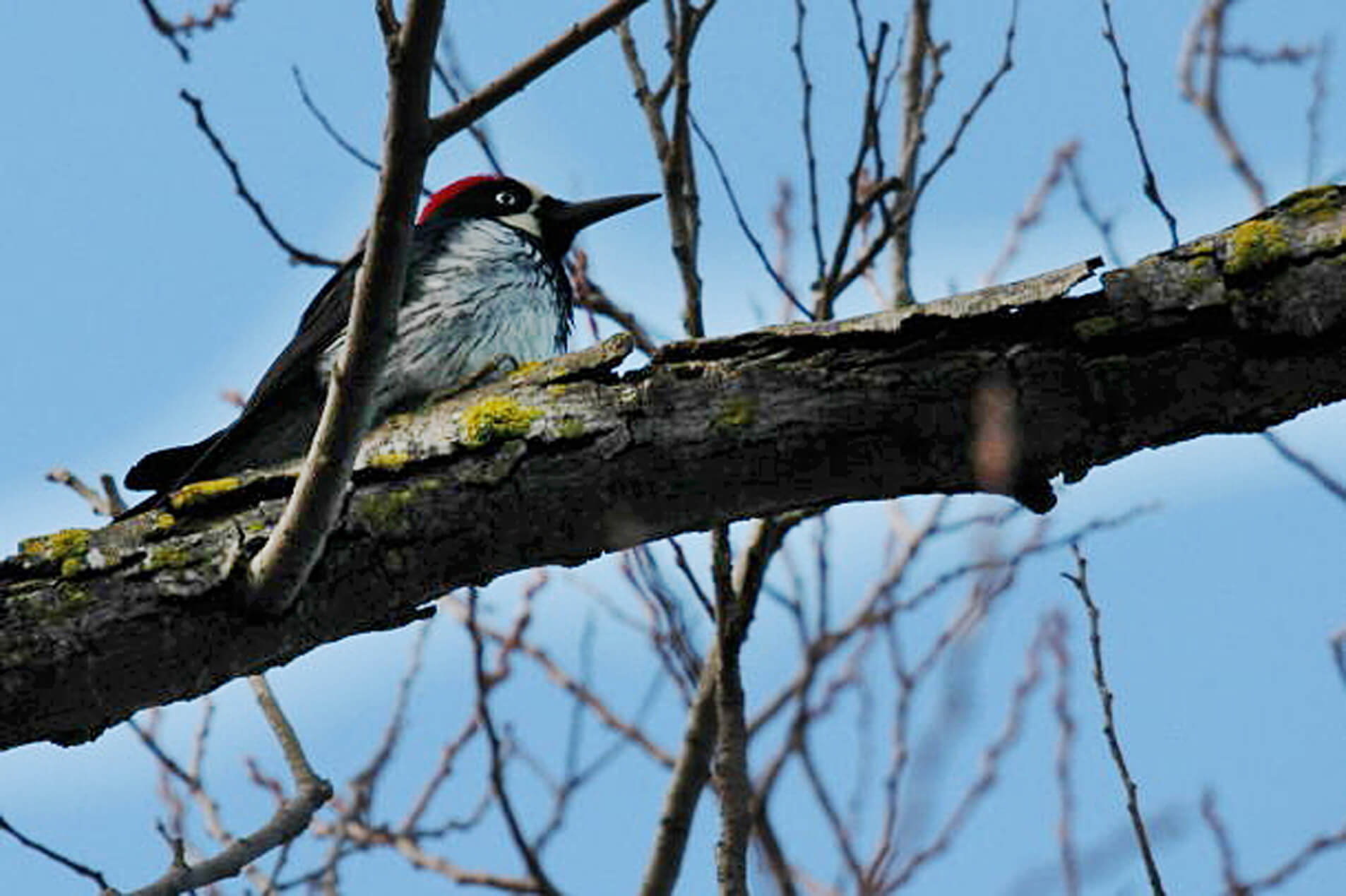A number of animals store acorns for later consumption; notably the Acorn Woodpeckers with their ‘granary trees’. They place each acorn just so, packed tightly into a hole, and then tend to their store regularly, moving the acorns to smaller holes when they start to dry up and shrink.
Western Scrub Jays also store acorns, but they do it individually in holes in the ground. They prefer the long, skinny acorns of the Coast Live Oak – these fit perfectly in their bills! They are very sneaky about hiding their acorns; if another Jay is looking, or if there is a person close by, they will find another spot to hide it. Most they remember to retrieve, but those which they don’t have a chance to grow; many of the oaks that grow uphill from the parent tree were most likely planted by Jays!
This last fall I was also collecting nuts; gathering the fallen fruits of the California Bay trees (Umbellaria californica). Western Gray Squirrels eat most of them on my property, but trees in other areas drop lots of their fruits and they simply get stepped on or driven over until they’re completely squashed. I roasted the nut meats, and made delicious Bay-nut chocolate truffles! The flavor of the roasted bay nuts is something between chocolate and coffee, and the aroma of the roasting nuts is even more intriguing.
The vast majority of seeds are termed ‘orthodox’, meaning that they need to completely dry out before they are ready to grow or to be stored. This is pretty remarkable because a living plant is about 95% water, but the orthodox seeds are no more than 5% water content before they are ready to germinate. One way to think about the whole process of cleaning and drying the seeds is that it is a pre-germination technique. Many seeds germinate more readily after they have been stored; fewer seeds ‘hit the ground’ ready to grow.
The exceptions are seeds termed ‘recalcitrant’ and also called ‘mast’. These are the nuts; acorns, hazelnuts, buckeyes, and bay nuts among them. They cannot be allowed to dry out and do ‘hit the ground’ ready to grow, that is, if they are not eaten first!
For most of the year, my favorite time to be working outside is in the late afternoons and right until dark when I can barely see anything anymore. Now the short cold days force me to be inside earlier than I really like, but the time is well spent cleaning the last of the seeds collected over the fall, and organizing my whole vast collection of seeds – at last count, more than 100 different species of California natives!
I never clean Milkweed seeds inside, though; it’s just too messy – though I’m sure that’s not really the right word for it. Each Milkweed seed pod splits open along one side, and within the pod are about one hundred seeds are all neatly lined up along a center partition, and each one with its own delicate silken parachute.
Knowing that all that silk floats everywhere and gets into everything, I set up a large table outside, and get help from my volunteers to clean the seeds. We had dozens of large pods to glean seeds from, and soon so much silk was floating about that a Cooper’s hawk came in close to inspect all the stuff in the air.
I actually like to save a lot of the silk until after the rainy season and then release it to drift on the gentle winds of spring during the season when the songbirds need nesting materials. All the residues left from cleaning all the other types of seeds – chaff, small stems, berry skins, and seed capsules are deposited outside in places where any remaining seeds might have a chance to germinate and grow.


